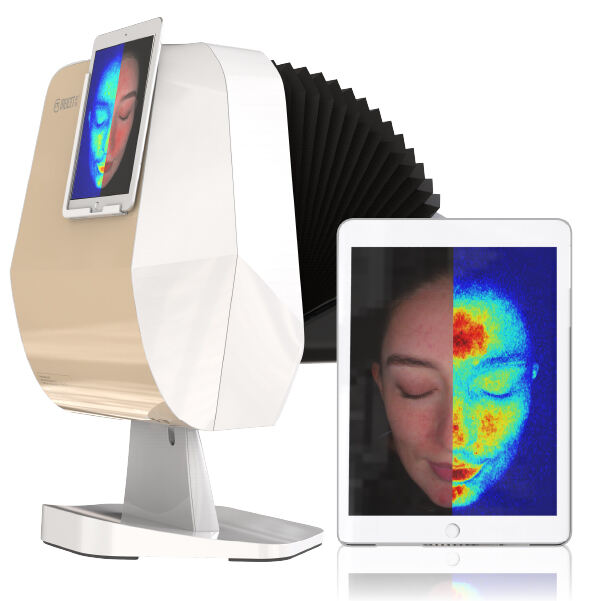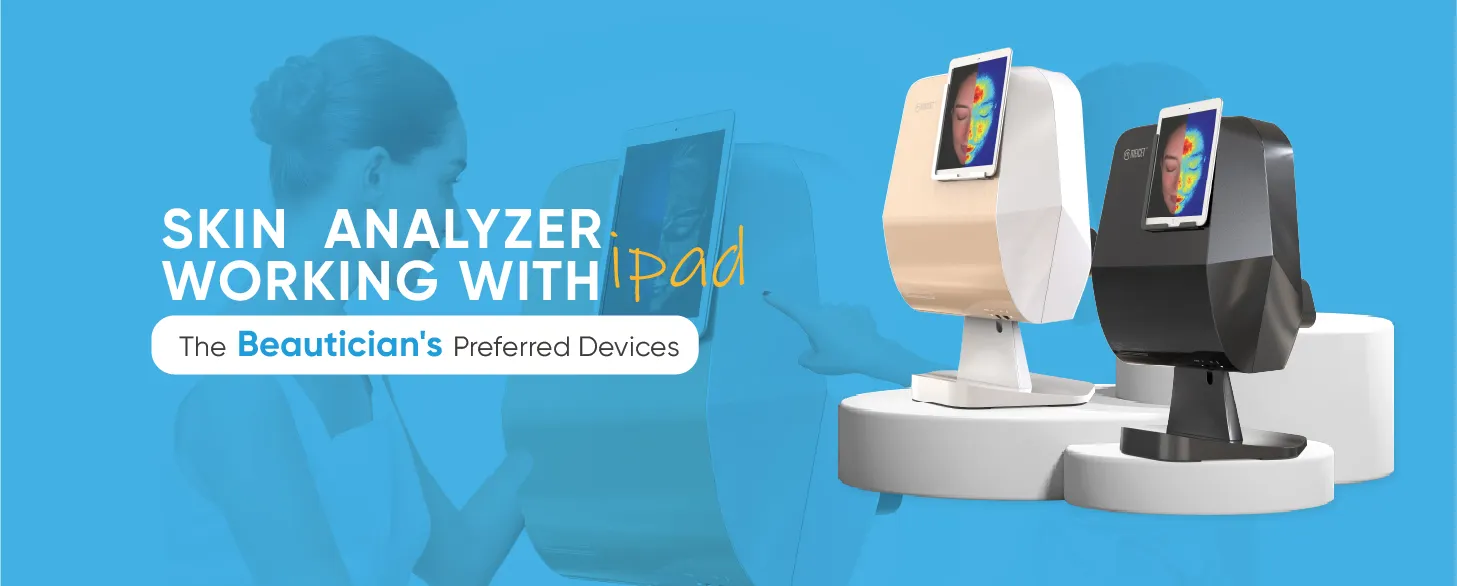
Laser treatments are a cornerstone of spot removal therapy, offering precise targeting of unwanted pigmentation—from solar lentigines and post-inflammatory hyperpigmentation (PIH) to mild melasma. However, their success depends on careful monitoring of how pigment responds to laser energy: over-treatment can trigger inflammation-induced hyperpigmentation (a particular risk for darker skin tones), while under-treatment leaves spots unresolved, requiring additional sessions and increasing patient frustration. MEICET’s MC88 Skin Analyzer provides clinicians with detailed imaging to track pigment evolution post-laser, ensuring treatments are calibrated to deliver optimal results while minimizing risks.

Tracking Pigment Breakdown After Laser
Lasers work by delivering focused energy that shatters pigment into smaller particles, which are then cleared by the body’s lymphatic system—a process that unfolds over time. The MC88’s imaging modes capture this progression, providing visibility into stages that are invisible to the naked eye:
- UV imaging highlights residual epidermal pigment, which fluoresces under UV light. In the first period post-laser, treated spots may appear darker (a “crusting phase”) as pigment particles rise to the surface, but UV scans show this as increased fluorescence—normal for this stage. Later, reduced UV fluorescence indicates the body is clearing pigment, confirming the laser’s effectiveness.
- RGB imaging maps surface color changes, distinguishing between normal healing (gradual lightening) and abnormal responses (sudden darkening or uneven fading). For example, a solar lentigo treated with a Q-switched laser should show steady lightening in RGB mode over time; abrupt darkening suggests inflammation-induced pigmentation, prompting intervention with brightening topicals.
- Polarized light imaging detects subclinical inflammation, which can disrupt pigment clearance. Persistent redness in polarized mode after laser signals ongoing inflammation, which may trigger melanocyte overactivity and hyperpigmentation. This finding guides the addition of anti-inflammatory serums (e.g., azelaic acid) to calm the skin.
Consider a patient with multiple solar lentigines on the cheeks treated with a Q-switched Nd:YAG laser. MC88 scans early on show increased UV fluorescence (normal pigment lifting), RGB confirming dark crusts, and minimal polarized light redness. Later, UV fluorescence is reduced, RGB shows crusts have shed to reveal lighter spots, and polarized light shows no inflammation—confirming the laser is working as expected. A final scan much later shows near-complete resolution in all modes, justifying no additional sessions.
Distinguishing Normal vs. Abnormal Responses
Not all post-laser pigment changes are desirable, and the MC88 helps clinicians identify warning signs early:
- Post-inflammatory hyperpigmentation (PIH) appears as increased RGB darkness and UV fluorescence in areas treated with laser. It often arises from excessive energy or inadequate cooling during treatment, particularly in patients with darker skin tones or a history of pigment sensitivity. MC88 scans after laser can detect early PIH (subtle darkening), enabling intervention with hydroquinone or tranexamic acid before it becomes prominent.
- Hypopigmentation (light spots) shows as reduced pigment in all modes, signaling over-treatment that has damaged melanocytes. This is more common with ablative lasers or high-fluence settings. MC88 scans can flag hypopigmentation early, prompting sun protection (to prevent contrast with surrounding skin) and, in some cases, topical melanocyte-stimulating agents.
- Incomplete clearance appears as persistent UV fluorescence and RGB darkness in treated areas, indicating the laser energy was insufficient to shatter all pigment. This is common in thicker lentigines or dermal pigment. The MC88’s data guides adjustments to laser parameters (e.g., higher fluence, longer pulse duration) for subsequent sessions.
A patient with PIH-prone skin treated for melasma with a fractional laser may have scans later showing increased RGB darkness in the treated area and UV fluorescence indicating new pigment formation. The clinician recognizes this as early PIH, prescribes a brightening serum, and delays the next laser session until the pigment stabilizes—preventing a cycle of worsening discoloration.
Guiding Session Timing and Intensity
Laser spot removal requires spaced sessions to allow pigment clearance and skin recovery, but intervals vary based on pigment type, skin tone, and response. The MC88’s data ensures sessions are timed to maximize efficacy while minimizing risk:
- Epidermal pigment (e.g., lentigines) typically clears within a reasonable period, with MC88 scans showing reduced UV fluorescence later—justifying a standard interval between sessions.
- Dermal pigment (e.g., mild melasma) clears more slowly, with visible changes often delayed. MC88 scans tracking CPL gray-blue density guide longer intervals to avoid over-stimulation.
- PIH-prone skin requires extended intervals to allow inflammation to resolve, with MC88 polarized light scans confirming no residual redness before re-treatment.
This customization prevents the “rush to retreat” that often exacerbates pigment issues. For example, a patient with dermal melasma may need longer intervals between laser sessions, with MC88 scans confirming reduced CPL density before proceeding—ensuring each session builds on the previous one without triggering inflammation.
The MC88 Skin Analyzer transforms laser spot removal from a trial-and-error process to a precision therapy, enabling clinicians to track pigment changes, detect complications early, and tailor sessions to each patient’s unique response. By providing visibility into the invisible stages of pigment clearance, it ensures spot removal treatments are effective, safe, and tailored to deliver optimal results for every skin type.
 EN
EN
 AR
AR
 BG
BG
 HR
HR
 CS
CS
 DA
DA
 NL
NL
 FI
FI
 FR
FR
 DE
DE
 EL
EL
 HI
HI
 IT
IT
 JA
JA
 KO
KO
 NO
NO
 PL
PL
 PT
PT
 RO
RO
 RU
RU
 ES
ES
 SV
SV
 TL
TL
 IW
IW
 ID
ID
 SR
SR
 SK
SK
 SL
SL
 UK
UK
 VI
VI
 SQ
SQ
 HU
HU
 TH
TH
 TR
TR
 FA
FA
 AF
AF
 MS
MS
 UR
UR
 BN
BN
 LA
LA

